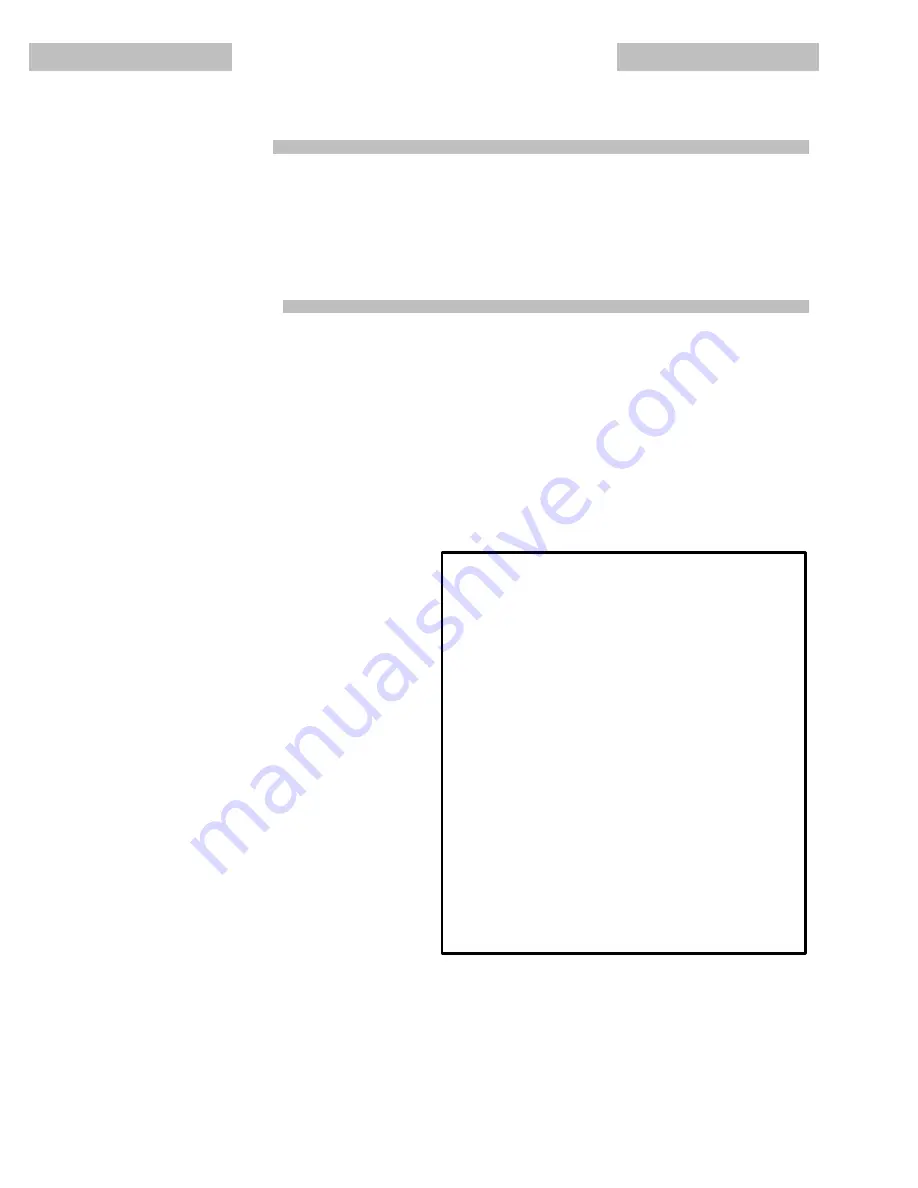
4
SAFETY WARNINGS
HIGH PRESSURE FLUID CAN CAUSE SERIOUS INJURY. FOR PROFESSIONAL USE ONLY.
OBSERVE ALL WARNINGS. Read And Understand All Instruction Manuals Before Operating Equipment.
MOVING PARTS HAZARD
KEEP HANDS AND FINGERS AWAY FROM THE PRIMING PISTON
DURING OPERATION AND WHENEVER THE PUMP IS CHARGED
WITH AIR to reduce the risk of injury!
On the pump downstroke the
priming piston extends beyond the intake cylinder to pull the material into
the pump. The priming piston works under extreme force. During opera-
tion and whenever the pump is charged with air, the priming piston can
severely injure or amputate a hand or finger, or break a tool, caught be-
tween it and the intake cylinder. Always follow the
Pressure Relief Pro-
cedure
, below, before checking, clearing, cleaning, flushing or servicing
any part of the pump.
The air motor piston (located behind the air motor shield) also moves
when air is supplied to the motor. NEVER operate the pump with the air
motor shield removed. Before servicing the pump, follow the
Pressure
Relief Procedure
below to prevent the pump from starting accidentally.
FLUID INJECTION HAZARD
General Safety
This equipment conducts very high fluid pressure. Spray from the spray
gun, leaks or ruptured components can inject fluid through your skin and
into your body and cause extremely serious bodily injury, including the
need for amputation. Also, fluid injected or splashed into the eyes or on
the skin can cause serious damage.
NEVER point the spray gun at anyone or at any part of the body. NEVER
put hand or fingers over the spray tip.
ALWAYS follow the
Pressure Relief Procedure
, right, before cleaning
or removing the spray tip or servicing any system equipment.
NEVER try to stop or deflect leaks with your hand or body.
Be sure equipment safety devices are operating properly before each
use.
Medical Alert––Airless Spray Wounds
If any fluid appears to penetrate your skin, get
EMERGENCY MEDICAL
CARE AT ONCE. DO NOT TREAT AS A SIMPLE CUT
. Tell the doctor
exactly what fluid was injected.
Note to Physician:
Injection in the skin is a traumatic injury.
It is im-
portant to treat the injury surgically as soon as possible
. Do not
delay treatment to research toxicity. Toxicity is a concern with some ex-
otic coatings injected directly into the blood stream. Consultation with a
plastic surgeon or reconstructive hand surgeon may be advisable.
Spray Gun Safety Devices
Be sure all spray gun safety devices are operating properly before each
use. Do not remove or modify any part of the spray gun; this can cause a
malfunction and result in serious bodily injury.
Safety Latch
Whenever you stop spraying, even for a moment, always set the spray
gun safety latch in the closed or “safe” position, making the spray gun in-
operative. Failure to set the safety latch can result in accidental triggering
of the spray gun.
Trigger Guard
Never operate the spray gun with the trigger guard removed. This guard
helps prevent the spray gun from triggering accidentally if it is dropped or
bumped.
Diffuser (only on spray guns)
The spray gun diffuser breaks up spray and reduces the risk of fluid injec-
tion when the tip is not installed. Check the diffuser operation regularly.
Follow the
Pressure Relief Procedure
, to the right, then remove the
spray tip. Aim the spray gun into a grounded metal pail, holding the spray
gun firmly to the pail. Using the lowest possible pressure, trigger the
spray gun. If the fluid emitted is not diffused into an irregular stream, re-
place the diffuser immediately.
Tip Guard (only on spray guns)
ALWAYS have the tip guard in place on the spray gun while spraying. The
tip guard alerts you to the fluid injection hazard and helps reduce,
but
does not prevent,
the risk of accidentally placing your fingers or any part
of your body close to the spray tip.
Spray Tip/Nozzle Safety
Use extreme caution when cleaning or changing spray tips/nozzles. If the
spray tip/nozzle clogs while spraying/dispensing, engage the spray gun
safety latch immediately. ALWAYS follow the
Pressure Relief Proce-
dure
and then remove the spray tip/nozzle to clean it.
NEVER wipe off build–up around the spray tip/nozzle until pressure is
fully relieved and the spray gun safety latch is engaged.
Pressure Relief Procedure
To reduce the risk of serious bodily injury, including fluid injection,
splashing in the eyes or on the skin, or injury from moving parts,
always follow this procedure whenever you shut of f the pump,
when checking or servicing any part of the spray/dispensing sys-
tem, when installing, cleaning or changing spray tips/nozzles, and
whenever you stop spraying/dispensing.
1. Engage the spray gun safety latch.
2. Shut off the air to the pump.
3. Close the bleed–type master air valve (required in your sys-
tem).
4. Disengage the safety latch.
5. Hold a metal part of the spray gun firmly to the side of a
grounded metal pail, and trigger the spray gun to relieve pres-
sure.
6. Engage the spray gun safety latch.
7. Open the drain valve and/or the pump bleeder valve (required
in your system), having a container ready to catch the drain-
age.
8. Leave the drain valve open until you are ready to spray/dis-
pense again.
If you suspect that the spray tip/nozzle or hose is completely
clogged, or that pressure has not been fully relieved after following
the steps above, VERY SLOWLY loosen the retaining nut or hose
end coupling and relieve pressure gradually , then loosen com-
pletely. Now clear the tip/nozzle or hose.
Summary of Contents for Power-Flo Series
Page 2: ......





































